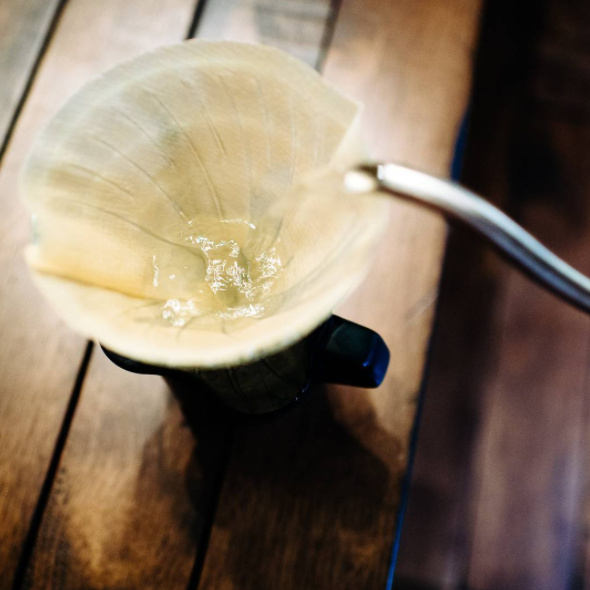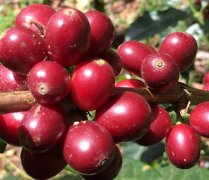It is suggested that the hand-pulping parameters of Sunshine Huakui Sidamo boutique coffee beans should be analyzed from the origin information and treatment method.

For professional baristas, please follow the coffee workshop (Wechat official account cafe_style)
In March this year, in the China Regional Cooking Competition held in Shanghai, a bean from Ethiopia, Africa, shook one expensive pedigree after another, fought back one by one, and was only narrowly defeated by the champion's Finca Deborah Rose Summer (last year's Wu Zelin's world champion beans), ranking the runner-up. This bean is Sunshine Sakuran from Humbera, Ethiopia.
Hand punching parameters are recommended:
[sun Huakui]: it is recommended to use 15 grams of powder at 90 degrees water temperature, 3.5 Fuji grindability 3.5 V 60 filter cup, water powder ratio 1:15, the first water injection 30g, steaming 30s, the second water injection 104g water cut off, the second water injection to 225g water, not the water in the tail section, the extraction time is about 2Rd 02s.
The coffee flavor of Sidamo is very diverse, because of the different soil composition, regional microclimate and countless native coffee varieties, the coffee produced in each urban area has obvious differences and characteristics. The Sidamo producing area (Sidama) is located in southern Ethiopia. The industry here is dominated by agriculture, and the coffee-growing area is located around the East African Great Rift Valley (Great Rift Valley). The coffee flavor of Sidamo is very diverse, because of the different soil composition, regional microclimate and countless native coffee varieties, the coffee produced in each urban area has obvious differences and characteristics. The Sidamo producing area (Sidama) is located in southern Ethiopia. The industry here is dominated by agriculture, and the coffee-growing area is located around the East African Great Rift Valley (Great Rift Valley).
Award-winning situation
2016 / 2017
Ethiopia National Taste of Harvest Competition champion
Winner of the Ethiopian Coffee Competition during the harvest season in 2016ache 2017
2017 Regional Africa Taste of Harvest Competition runner-up
Runner-up in 2017 African Coffee Competition
Origin information
Continent: Africa
Country of ownership: Ethiopia
Origin: Guji Guji producing area, Hambella Wamena area, Dimtu Village, Buku able Manor.
Coffee bean seed: Heirloom (Ethiopian native bean seed)
Altitude: 2250-2350m
Introduction of buku able Buku Agboola Manor in Hambella Wamena Humbera region, Guji Guji region, Ethiopia
Only the sun-tanned coffee beans produced by "Buku Abel" in Hambella producing area are the real Sakuran.
Hambella (Humbela) is located in the largest coffee producing area of Ethiopia, GUJI, and the west is opposite the mountain of Yegashefi kochore, which is the highest sub-area in Ethiopia.
At present, there are nearly 20 processing plants in the Hambella producing area, and of all the manors and processing plants, only the sun-tanned coffee from Buku Abel Manor is what we call this Sakuran.
Buku Abel is a small village surrounded by mountains on the African continent at an altitude of 2280 meters. December is its coffee harvest season. Whenever the mountains are covered with red and mature coffee cherry, the village is neatly arranged on African tanning beds. This is where "Sakuran" deals with.
All the coffee trees in Buku Abel Manor are planted at an altitude of 2250 to 2350 meters above the hillside. The red fructose picked by farmers does not begin to be treated in the sun until the sugar content is more than 30. The humidity of the red fruit needs to be ensured in the first two days of the sun, so that it has time to fully ferment. At night, the temperature here will drop to about 12 degrees, which ensures that the red fruit will not be overfermented.
After 18 days of sun treatment, the peel and pulp have been completely dehydrated, and we can easily get the coffee raw beans inside. Pack the raw beans and put them in a warehouse with 12-22 degrees Celsius and 45-55% humidity. After about 50 days of bean cultivation and further dehydration, shelling and screening are carried out when the moisture content reaches about 11% for formal market sale.
Natural solarization (African drying bed):
Spread the coffee fruit directly on the cement floor or on the drying rack in order to make the coffee dry and easy to preserve. It usually depends on the weather, and the drying time is about 2-4 weeks.
Coffee usually used for commercial purposes will be dried on the cement floor. Keep rolling the coffee fruit in time so that the back of the coffee is heated evenly, which is good for drying, and at the same time, it also avoids mildew caused by the bottom touching the ground for too long.
Hand-selected fruits and coffee beans used to make boutique products are treated in the sun with African Bed (African drying bed). Coffee fruits are sunbathed on transparent beds with mesh, and the thickness of the shelves varies according to local conditions.
Important Notice :
前街咖啡 FrontStreet Coffee has moved to new addredd:
FrontStreet Coffee Address: 315,Donghua East Road,GuangZhou
Tel:020 38364473
- Prev

Only sun-tanned coffee from Buku Agboola Buku Abel Manor is the Sidamo Sakuran.
Communication of professional baristas Please pay attention to Coffee Workshop (Wechat official account cafe_style) Coffee in Sidamo is very diverse in flavor, because different soil ingredients, regional microclimate and countless native coffee varieties make the coffee produced in each town area have obvious differences and characteristics. The Sidamo producing area (Sidama) is located in southern Ethiopia. The industry here
- Next

What is the difference between the same 90 + Sidamo Honey Kiss and other 90 + coffee beans?
For the exchange of professional baristas, please follow the coffee workshop (Wechat official account cafe_style) Nekisse country: Sidamo altitude: 17502000m production area: Sidamo baking degree: light baking method: sun varieties: local native seed processing plant: NinetyPlus90 + flavor: blueberry, passionfruit, peach 90 + beans live with the general habits of boutique beans
Related
- Detailed explanation of Jadeite planting Land in Panamanian Jadeite Manor introduction to the grading system of Jadeite competitive bidding, Red bid, Green bid and Rose Summer
- Story of Coffee planting in Brenka region of Costa Rica Stonehenge Manor anaerobic heavy honey treatment of flavor mouth
- What's on the barrel of Blue Mountain Coffee beans?
- Can American coffee also pull flowers? How to use hot American style to pull out a good-looking pattern?
- Can you make a cold extract with coffee beans? What is the right proportion for cold-extracted coffee formula?
- Indonesian PWN Gold Mandrine Coffee Origin Features Flavor How to Chong? Mandolin coffee is American.
- A brief introduction to the flavor characteristics of Brazilian yellow bourbon coffee beans
- What is the effect of different water quality on the flavor of cold-extracted coffee? What kind of water is best for brewing coffee?
- Why do you think of Rose Summer whenever you mention Panamanian coffee?
- Introduction to the characteristics of authentic blue mountain coffee bean producing areas? What is the CIB Coffee Authority in Jamaica?

